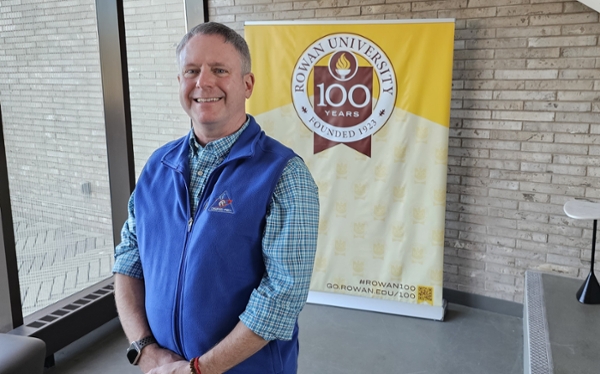Vital to NASA mission, Rowan prof discusses early findings of asteroid return sample
Vital to NASA mission, Rowan prof discusses early findings of asteroid return sample

Following a seven-year journey of billions of miles, the spacecraft OSIRIS-REx returned a sample from the asteroid Bennu Sept. 24 and Rowan University’s Dr. Harold Connolly Jr., along with hundreds of his NASA colleagues, wept with joy.
Connolly, founding chair of the Department of Geology in the School of Earth & Environment, has been affiliated with the OSIRIS-REx mission for 15 years and is leading analyses of the sample it returned.
The Mission Sample Scientist, Connolly is overseeing research by some 200 investigators into the pristine sample from Bennu, a carbonaceous near-Earth asteroid that poses a potential hazard to the planet.
Based temporarily at Houston’s Johnson Space Center for the initial characterization and analyses, Connolly returned briefly to campus the week of Oct. 9, ebullient with the mission’s early success, which was anything but guaranteed. In fact, after OSIRIS-REx completed a highly technical touch-and-go collection procedure above Bennu on Oct. 20, 2020, a flap that was designed to hold sample in the spacecraft’s collection head jammed and it was unclear how much of the invaluable asteroid material might have been lost.
OSIRIS-REx ejected the capsule high above Earth and NASA scientists recovered it in the secure Utah Test and Training Range.
“It still boggles my mind that we did it,” Connolly said. “This was a point in my life when everything was perfect.”
Discussing the mission just over two weeks after the sample capsule was recovered, Connolly said researchers are still calculating how much material was collected but scientists estimate the total was about eight ounces, which would far exceed the mission’s goal.
Initial testing has confirmed that Bennu, a loosely-constructed, top-shaped asteroid more than 4.5 billion years old, contains water, and that supports a long-held theory that asteroids delivered the first water to Earth.
“It’s a pristine sample that hasn’t interacted with Earth’s atmosphere or microbes on Earth (as meteorites do)," Connolly said. “It’s really the cosmos in your hands.” (See video on right.)
Connolly said more than 120 peer-reviewed research articles are planned over the next two years as investigators work to unravel the mysteries in the ancient sample. Further studies will probe the geologic nature of the sample and help scientists better understand how the asteroid, which is roughly 500 meters in diameter, moves through space.
That could extend to an understanding of how Bennu, and carbonaceous asteroids like it, could be prevented from hitting Earth.
For now, Connolly is simply awestruck by the mission’s success to date and the sample it returned.
“When you’re out in the desert and look up, it’s the deep, dark night, but it sparkles. That’s what the sample looks like,” he said.